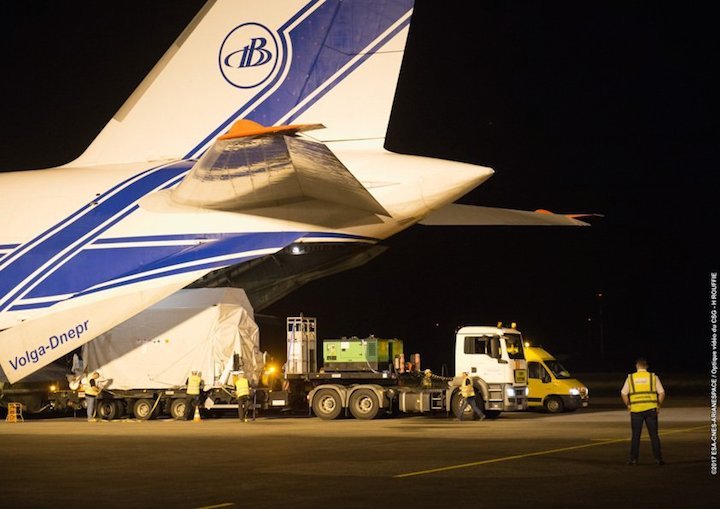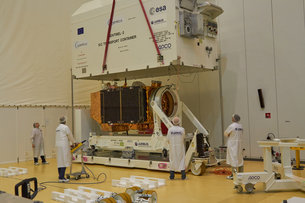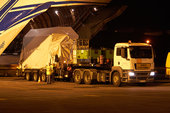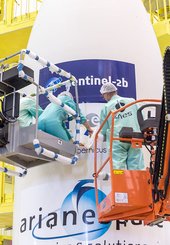Ground crews have mounted the fully-fueled Sentinel 2B spacecraft, the next mission in Europe’s multibillion-dollar Copernicus Earth observation satellite fleet, on top of a Vega rocket inside a protective gantry on its launch pad in French Guiana for blastoff next month.
The satellite was encapsulated inside the Vega rocket’s Swiss-made composite nose shroud Feb. 15, then transferred to the Vega launch pad Feb. 18, where the four-stage booster was already assembled and awaiting the arrival of the payload.
Sentinel 2B is scheduled to lift off at 0149 GMT March 7 (8:49 p.m. EST March 6) on top of the Vega rocket, which will fly on its ninth mission since debuting in February 2012.
Next month’s launch will be the third Arianespace mission of the year, and the first Vega launch of 2017.
The Sentinel 2B spacecraft carries a sharp-eyed camera — sensitive to 13 different nuances of color — designed to paint a broad swath 180 miles (290 kilometers) wide as the satellite circles Earth in polar orbit at an altitude around 488 miles (786 kilometers) above the planet.
Built by Airbus Defense and Space, Sentinel 2B follows the identical Sentinel 2A Earth observatory launched in June 2015. With two Sentinel 2 platforms in orbit, users will be able to glimpse the same location on Earth every five days.
The European Commission’s Copernicus program has several lines of Sentinel satellites. While the Sentinel 2 series is devoted to land imaging — roughly equivalent to the U.S. government’s Landsat missions — other Sentinel satellites carry radar and atmospheric sensors to monitor pollution, ice sheets, oil spills and other environmental concerns.
Sentinel 2B will be the fifth Copernicus satellite launched overall since the Sentinel deployments began in 2014.
ESA manages the satellites and launches for the Copernicus program on behalf of the European Commission, the EU’s executive body.
The satellite was fueled with its supply of in-orbit maneuvering propellant before encapsulation inside the Vega rocket’s payload fairing, giving Sentinel 2B a launch mass around 2,500 pounds (about 1,140 kilograms).
Once hoisted into the Vega launch pad’s mobile gantry, the fairing and Sentinel 2B were lowered on top of the rocket’s fourth stage. Ground crews successfully completed functional checks of the satellite Feb. 19.
Sentinel 2B is designed for a mission of at least seven years.
The images below show fueling of Sentinel 2B, encapsulation of spacecraft inside the fairing, and its arrival at the Vega launch pad before attachment atop the 98-foot-tall (30-meter) rocket.
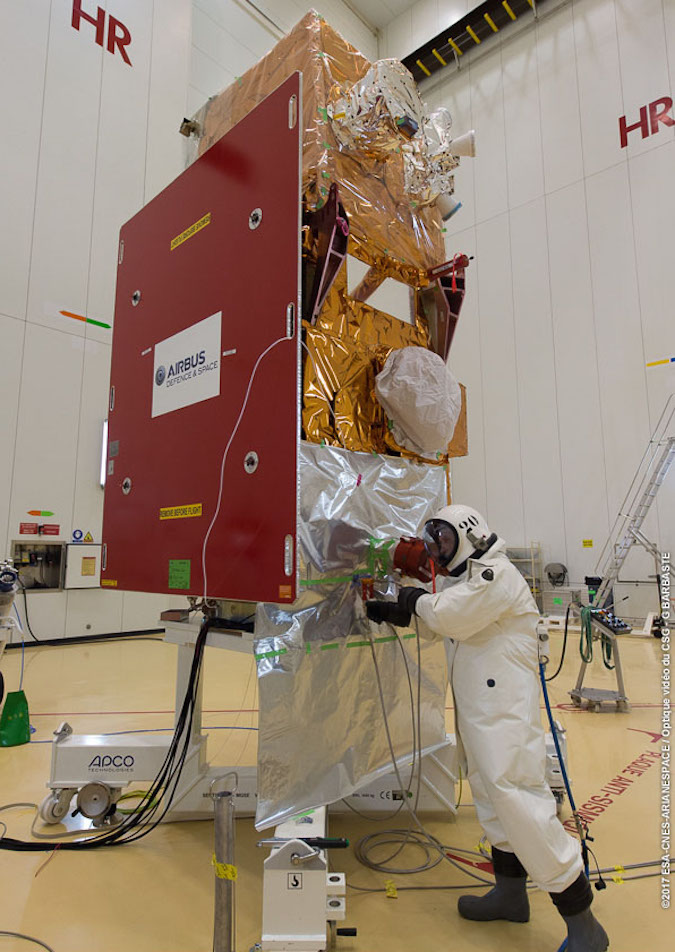
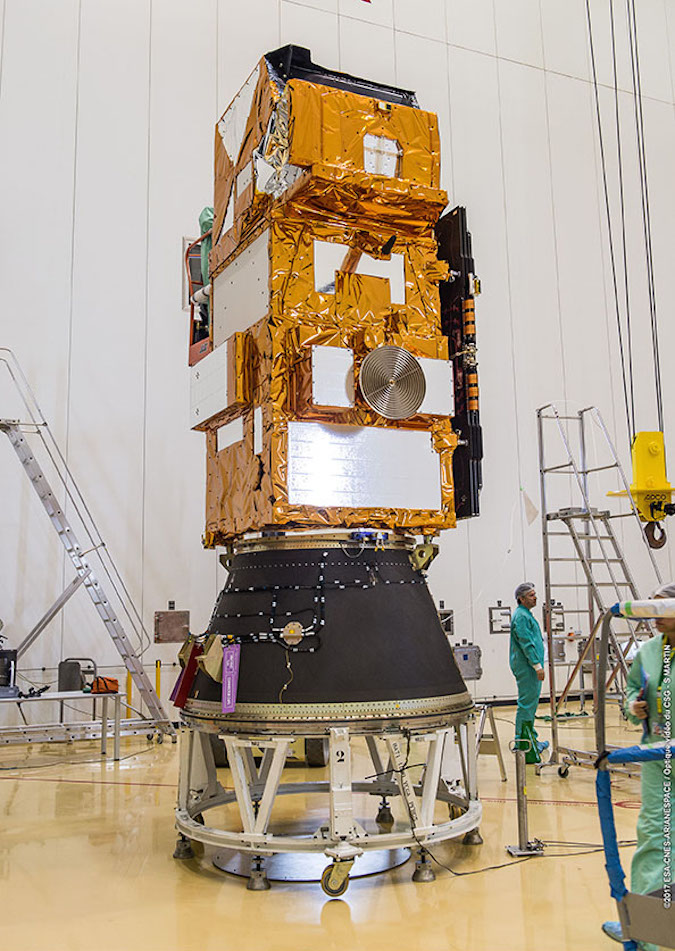
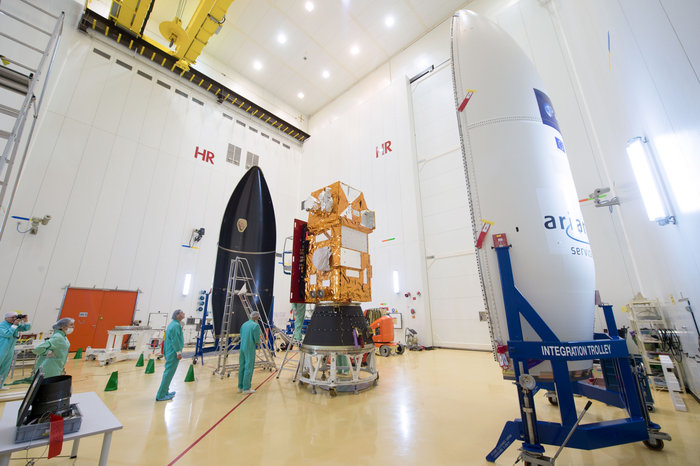
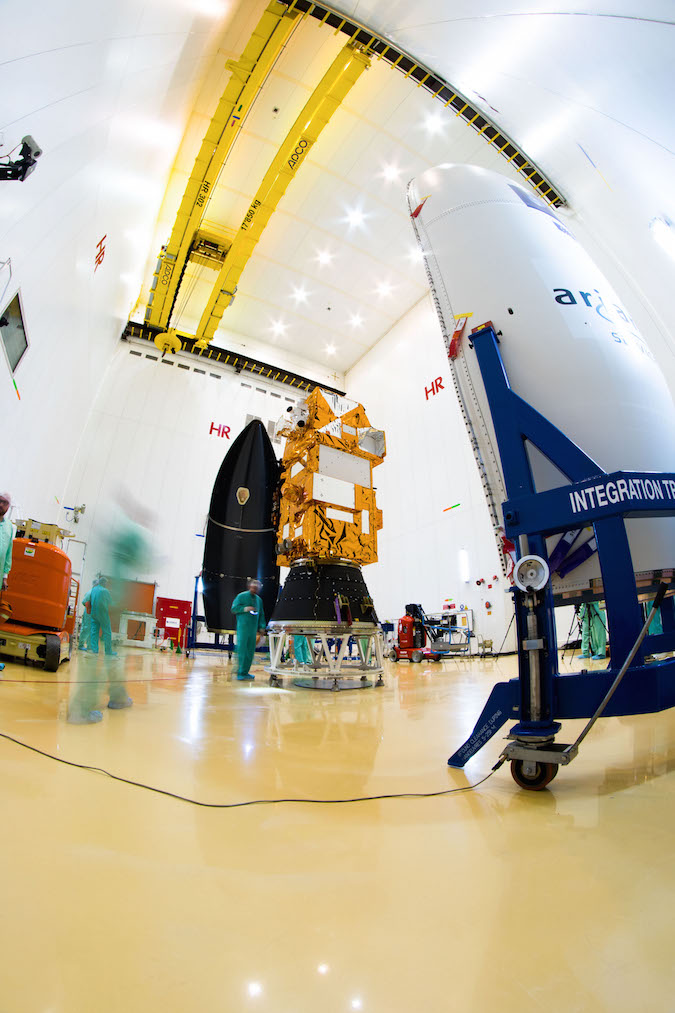
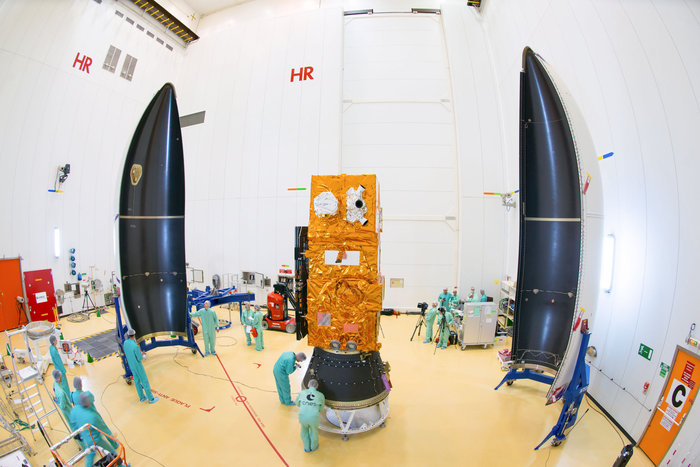
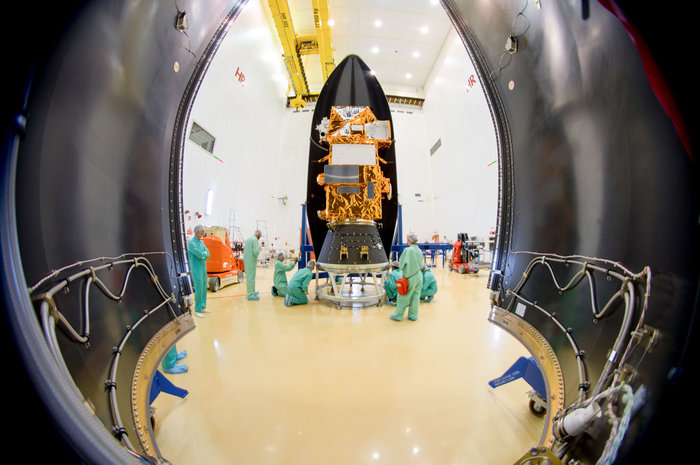
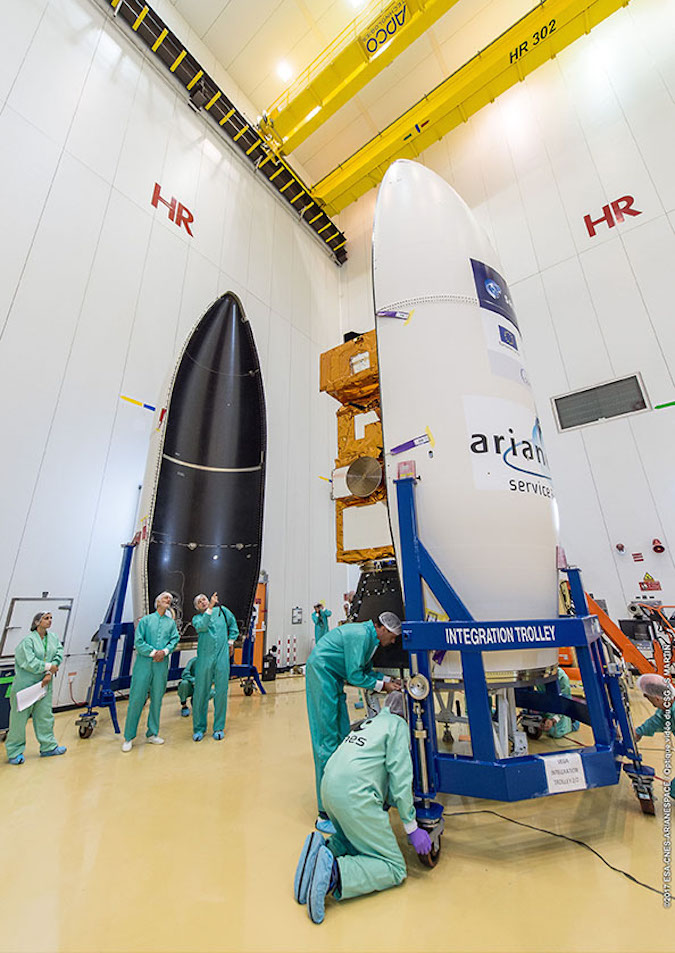
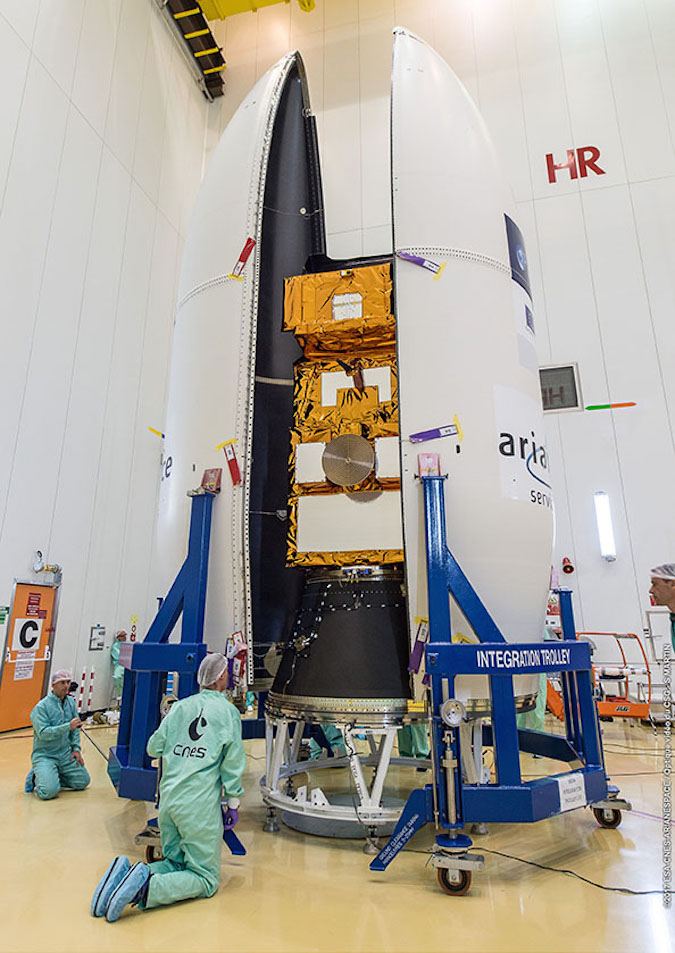
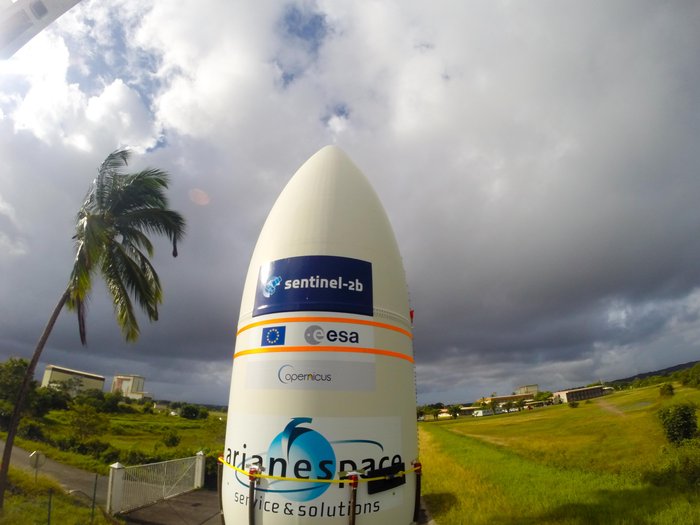
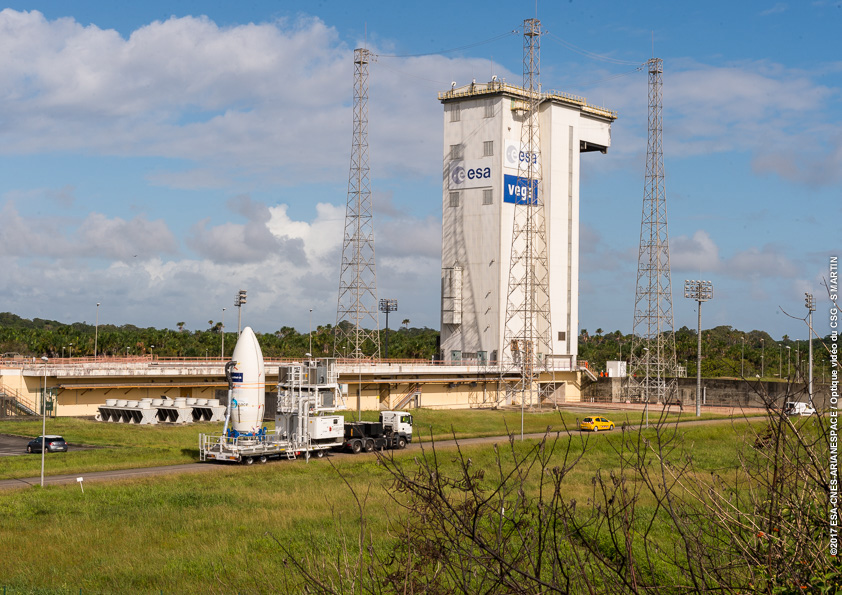
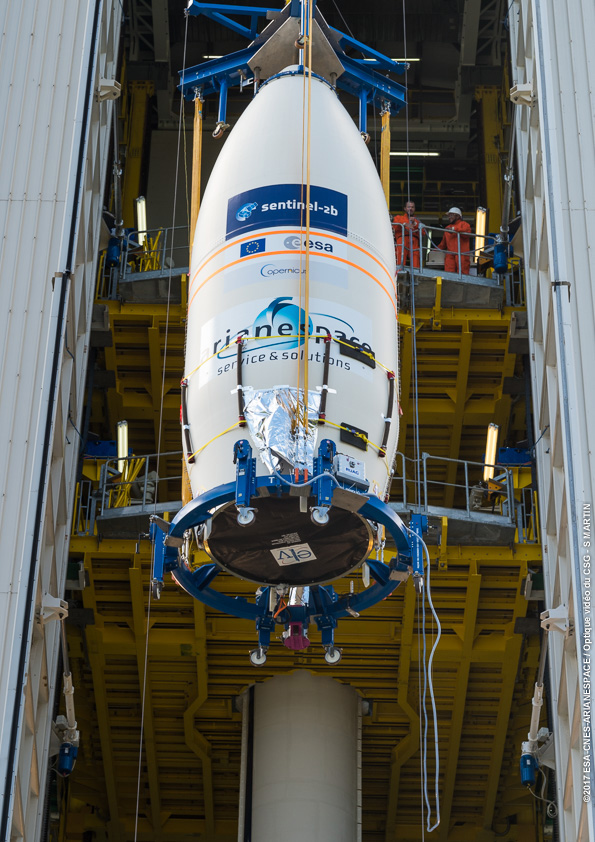
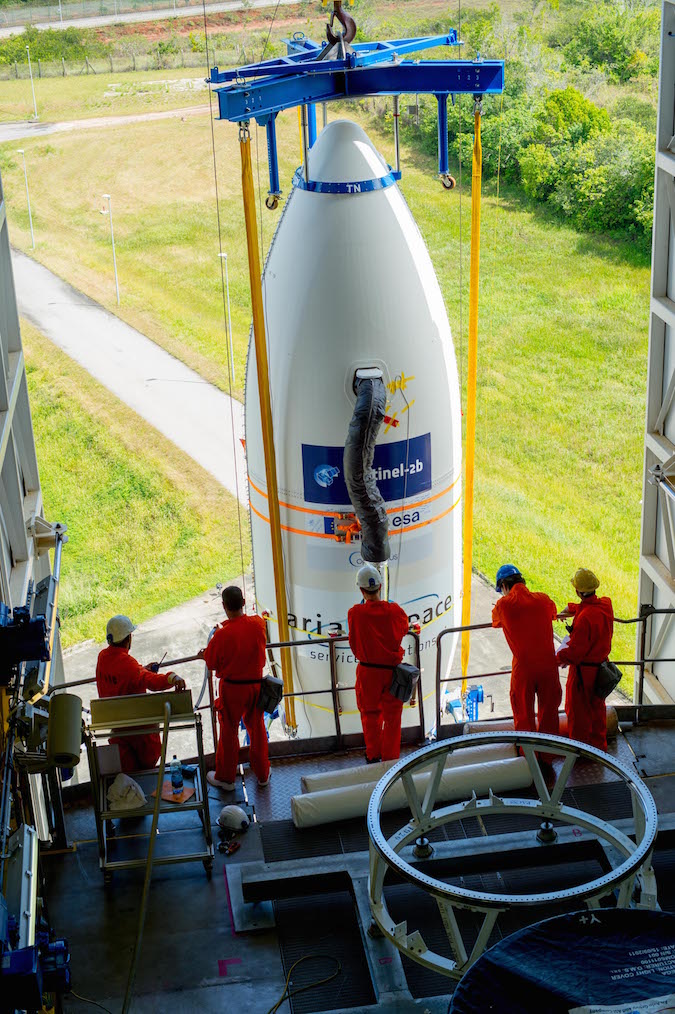
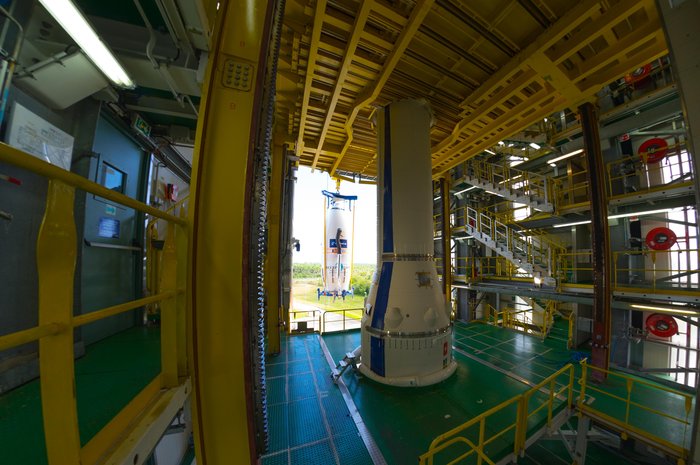
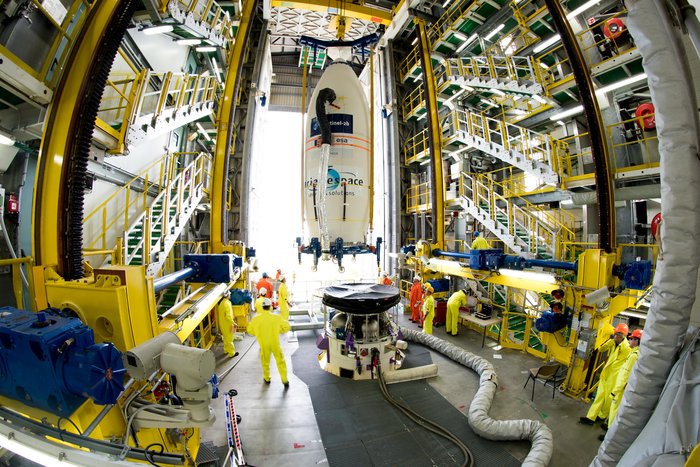
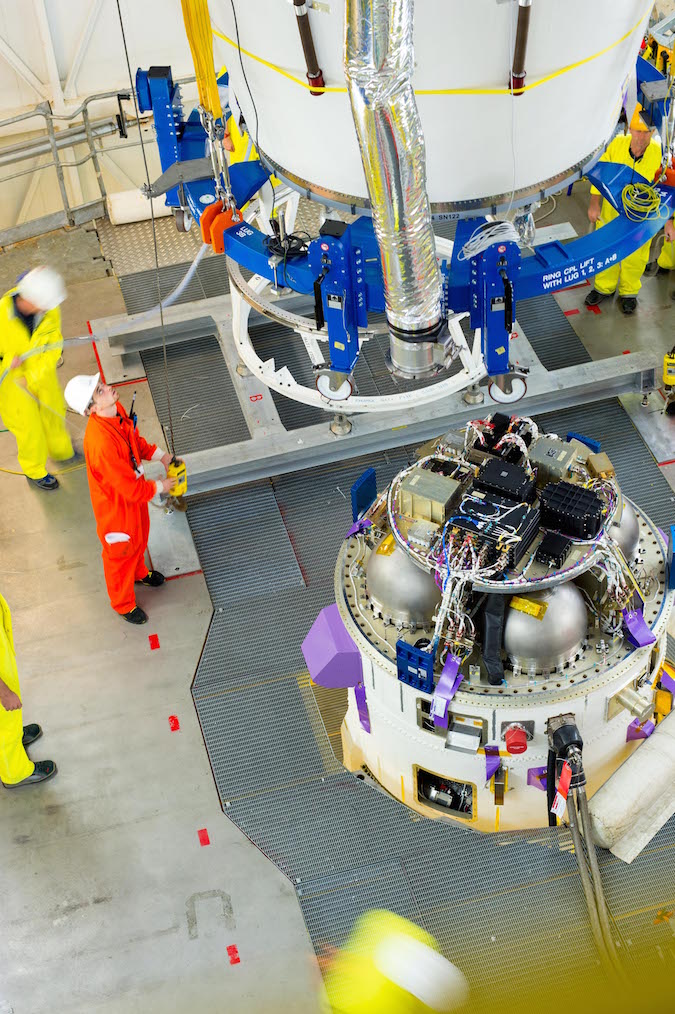
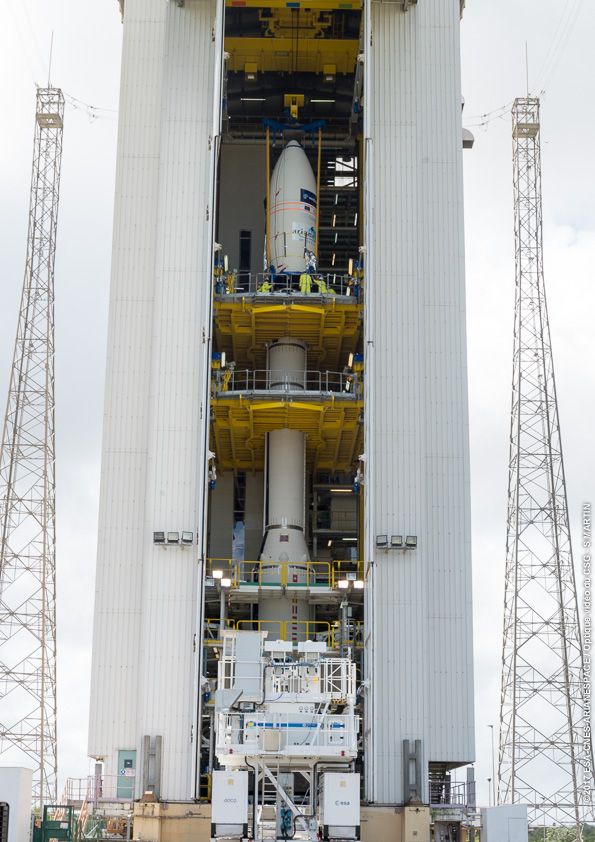
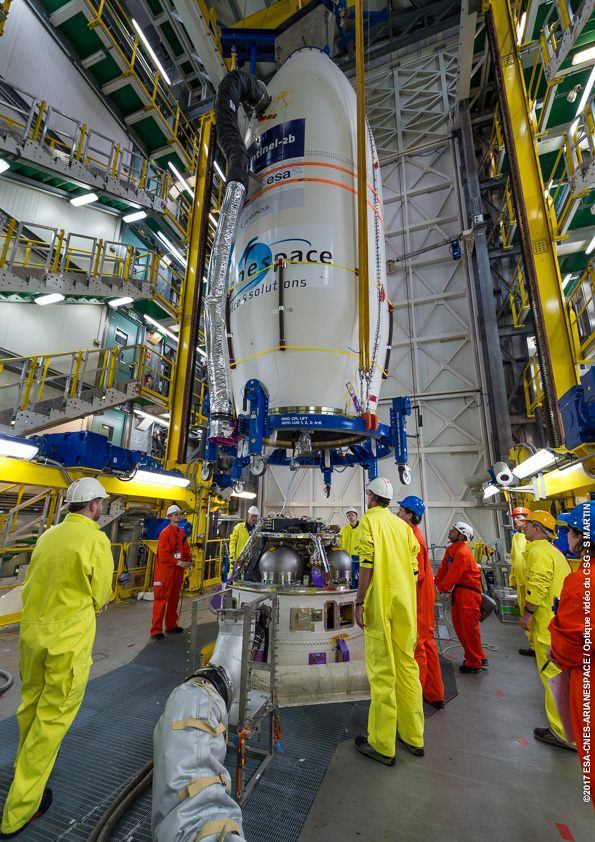
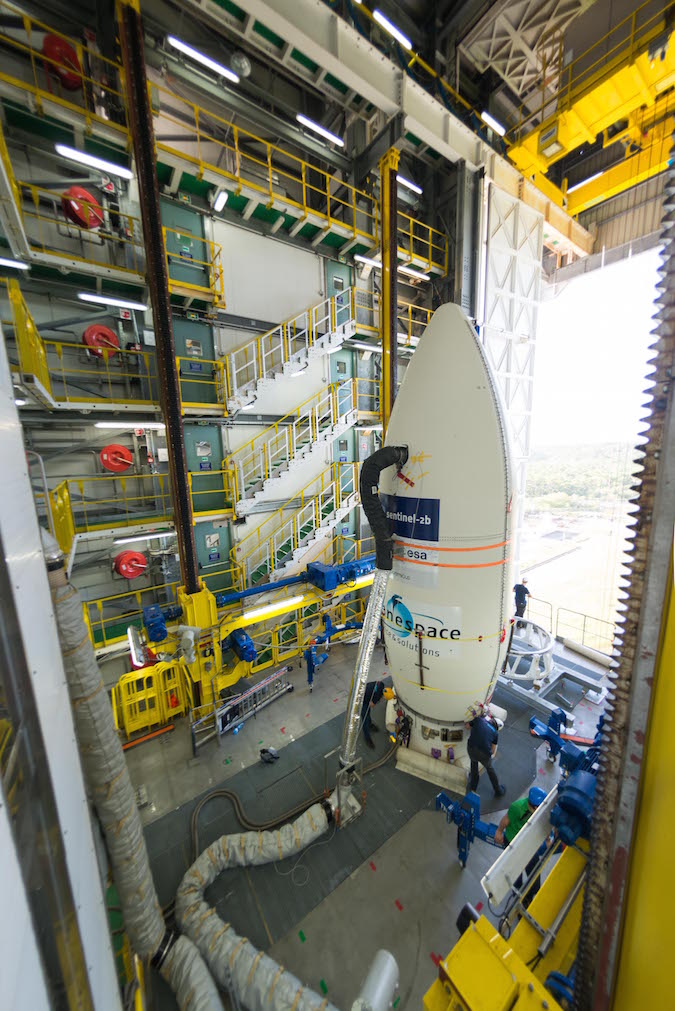
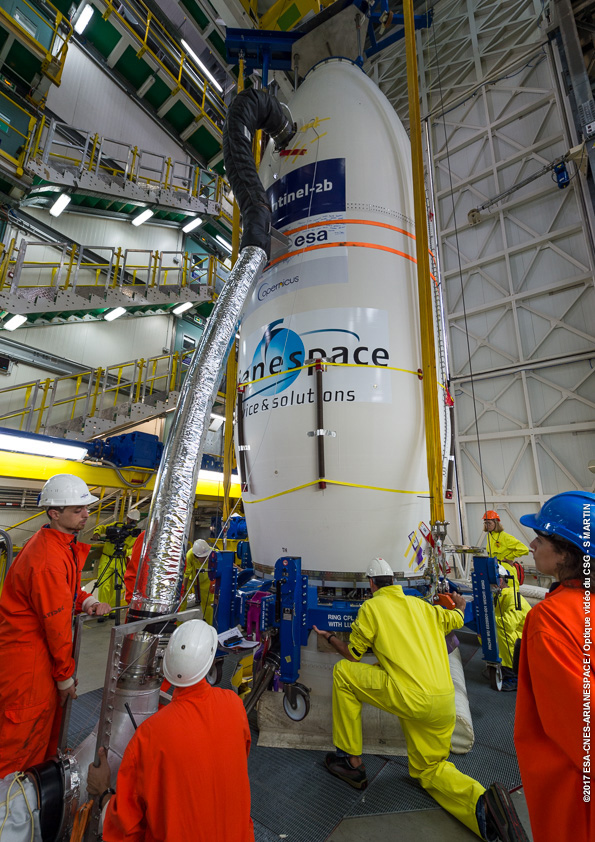
Europe’s Vega small launcher is set to demonstrate its extended capability to deploy multiple light satellites using its new versatile Small Satellites Mission Service (SSMS) dispenser, in the second half of 2018.
This demonstration provides the first of the launch opportunities under the new Light satellite, Low-cost Launch opportunity (LLLor L3) Initiative initiated at the ESA Council Meeting at Ministerial Level in December 2016 with the aim to provide low-cost and regular launch services for European Institutional light satellites through full exploitation of the Ariane 6 and Vega C launch systems’ capabilities.
This first proof-of-concept flight using the current Vega launch system will demonstrate and validate standard innovative services for light satellites.
The SSMS dispenser with its modular design enables Vega to provide launch opportunities for light satellites with an overall mass ranging from 1 kg CubeSats up to 400 kg minisats with different alternative configurations and relevant combinations under a ‘rideshare’ concept.
Potential customers, be they European public-sector organisations or other entities, are invited to respond to the joint ESA and European Commission Announcement of Opportunity, which can be downloaded here together with its questionnaire, by 31 March.
Quelle: ESA
---
Update: 5.03.2017
.
Vega is cleared for Arianespace’s March 6 liftoff with Sentinel-2B
Arianespace’s third flight of 2017 has been approved for its March 6 evening liftoff from French Guiana following today’s Launch Readiness Review for the lightweight Vega mission to Sun-synchronous orbit with Europe’s Sentinel-2B Earth observation satellite.


The review, performed at the Spaceport in French Guiana, confirmed the “go” status of the four-stage Vega and its 1,130-kg. Sentinel-2B payload, along with the Spaceport’s launch site infrastructure and the network of trajectory-following tracking stations.
All is now set for a liftoff at precisely 10:49:24 p.m. local time in French Guiana (1:49:24, Universal Time – UTC on March 7) for a mission lasting 57 minutes, 57 seconds.
Designated Flight VV09 in Arianespace’s launcher family numbering system, this will be the ninth with Vega since its Spaceport introduction in February 2012, and is one of up to 12 missions planned by the launch services company during 2017. Previous flights this year were a heavy-lift launch with Ariane 5 on February 14, which placed the SKY Brasil-1 and Telkom 3S relay satellites into geostationary transfer orbit (GTO); and a medium-lift Soyuz launch on January 27 that delivered Europe’s first “SmallGEO” relay platform, Hispasat 36W-1, into GTO.
Vega’s mission to Sun-synchronous orbit
After its deployment by Vega on Flight VV09, Sentinel-2B will operate at an altitude of approximately 786 km., with a design lifetime of seven-plus years. The spacecraft is equipped with a multispectral, wide-swath, high-resolution optical imaging instrument, with the primary goal of monitoring land masses and coastal zones around the world. Data collected by Sentinel-2B is to be used for applications involving the monitoring of vegetation, soil types and habitats.

Sentinel-2B is the fourth Copernicus program satellite to be orbited by Arianespace, following the successful launch of Sentinel-1A on a Soyuz in April 2014, the lofting of Sentinel-2A aboard a Vega in June 2015, and the deployment of Sentinel-1B by a Soyuz in April 2016.
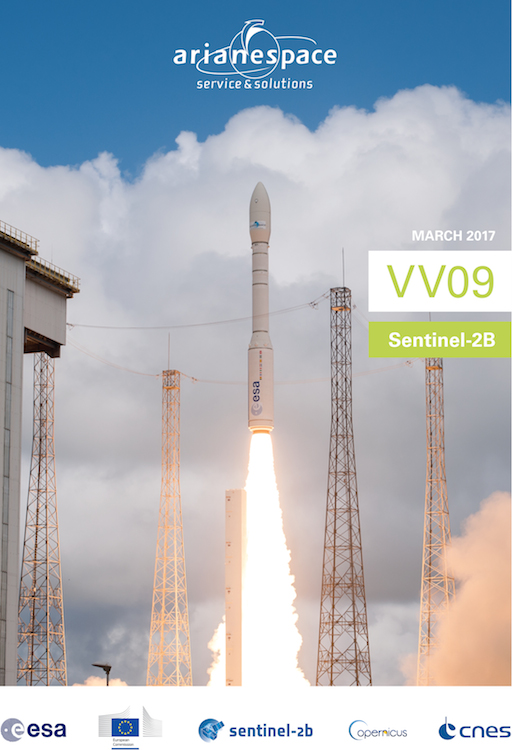
The development of Sentinel-2B results from a close collaboration involving the European Space Agency, the European Commission, service providers and data users. A consortium of companies led by Airbus designed the mission and built the spacecraft, supported by the French CNES space agency and the DLR German Aerospace Center.
Quelle: arianespace
-
Update: 6.03.2017
.

Quelle: arianespace
-
Update: 7.03.2017
.
Erfolgreicher Start von Vega Flight VV09 LIVE-Frams:
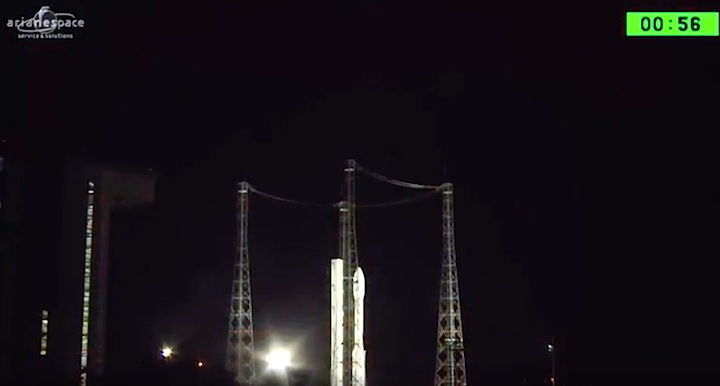
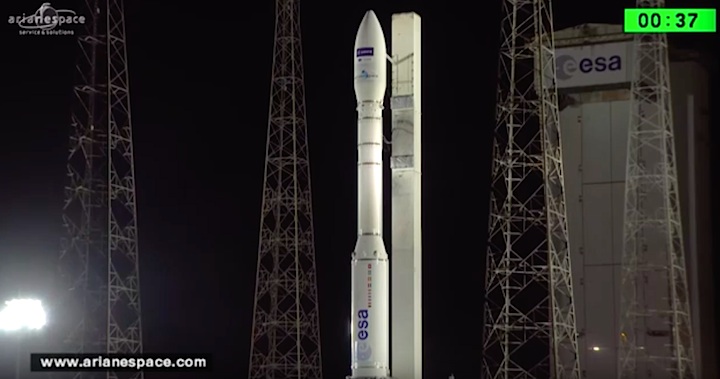
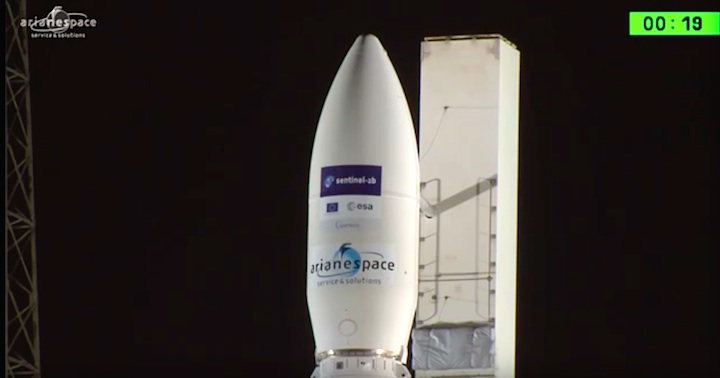
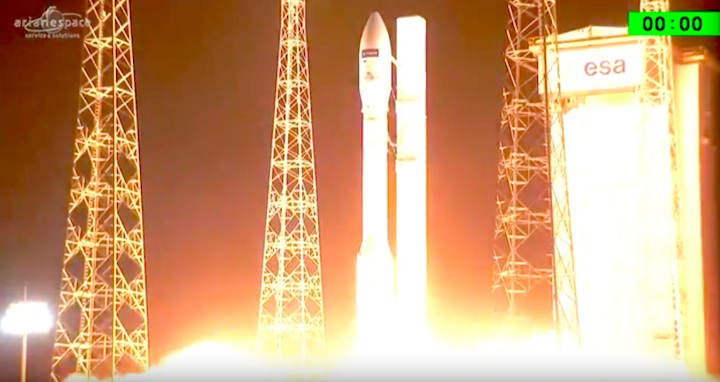
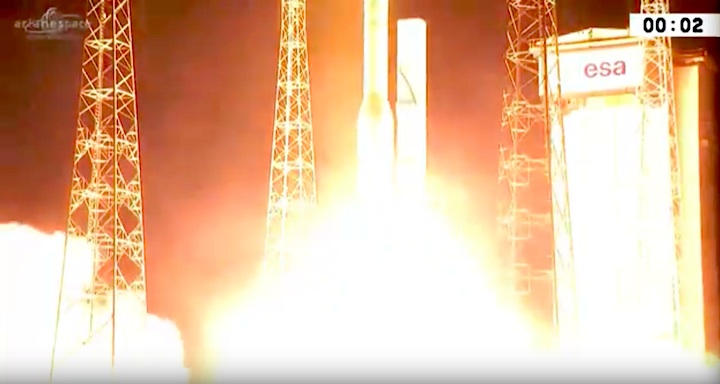
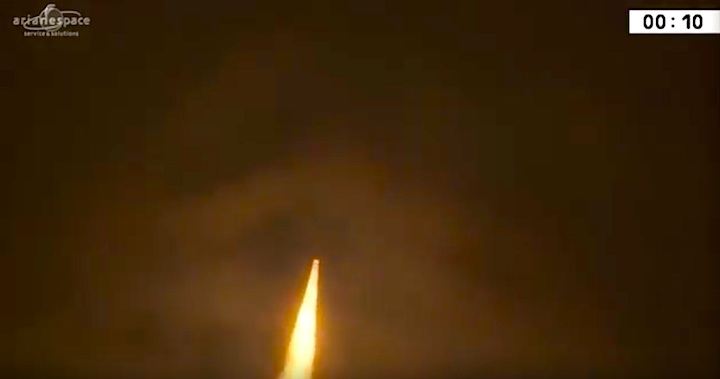
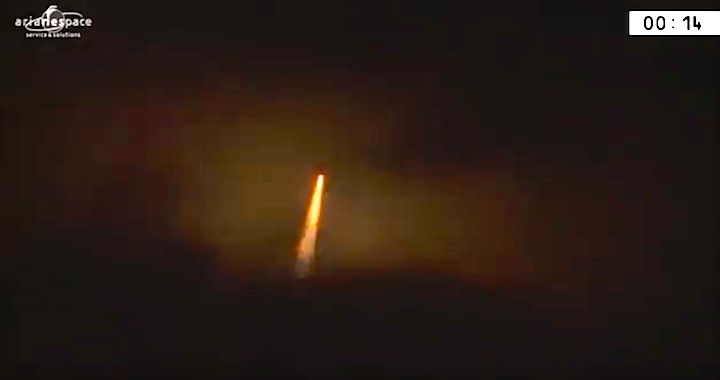
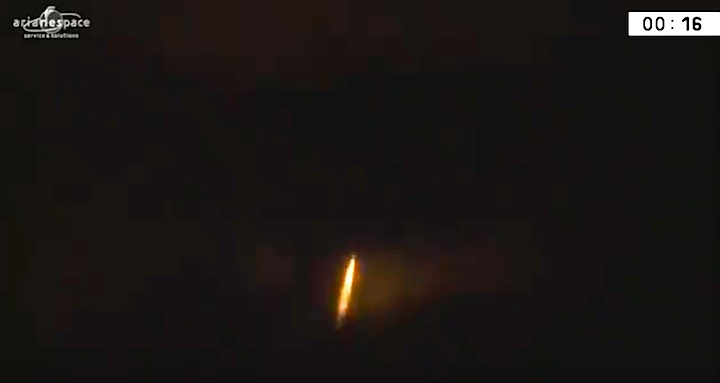
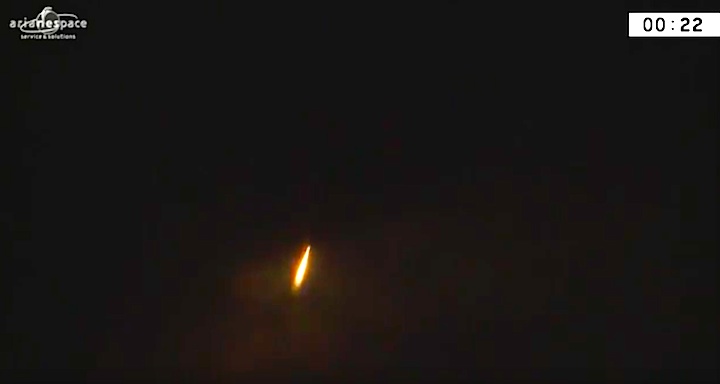
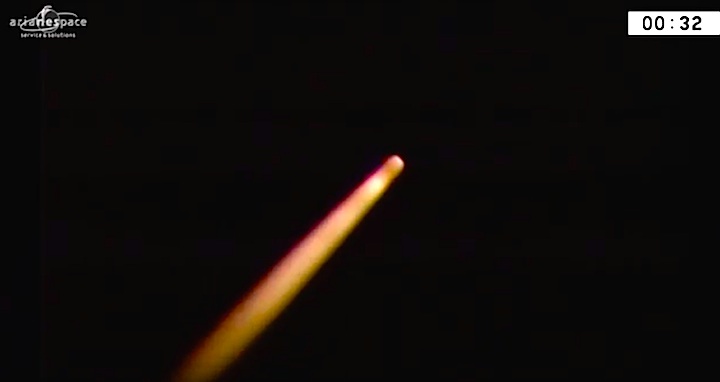
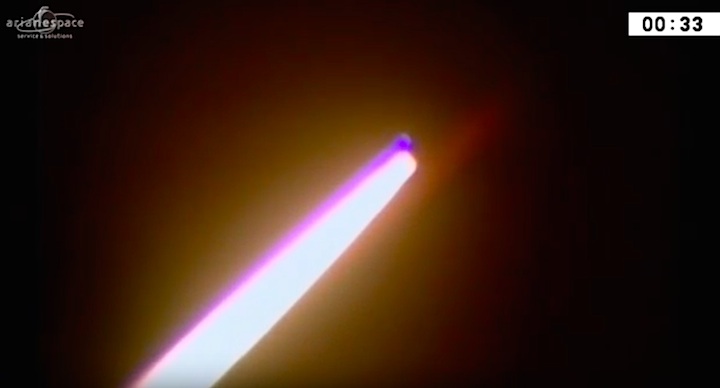
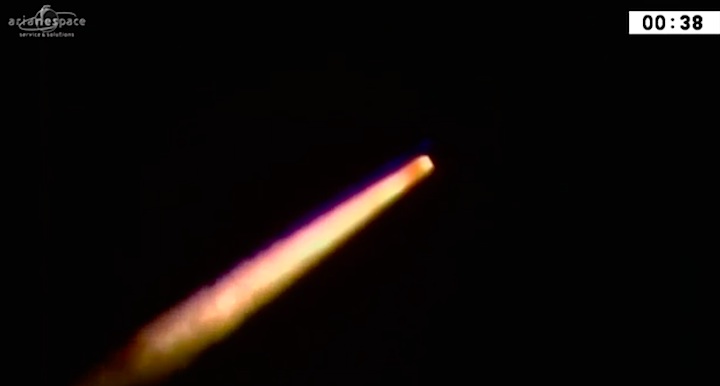
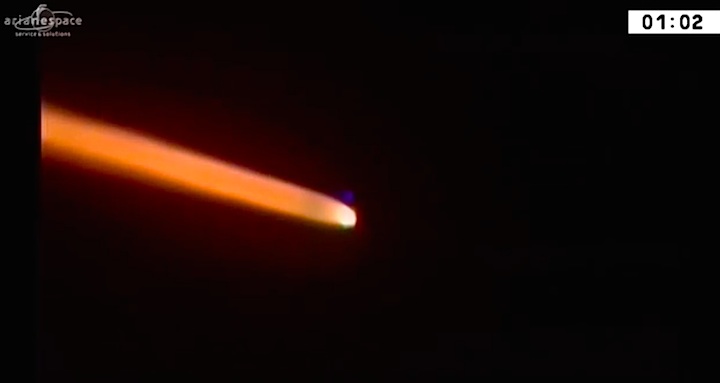
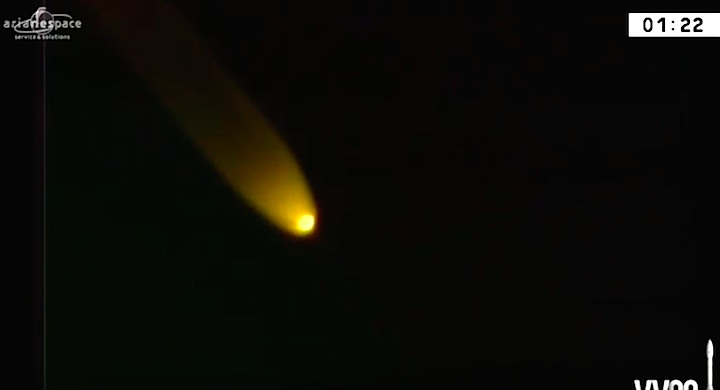
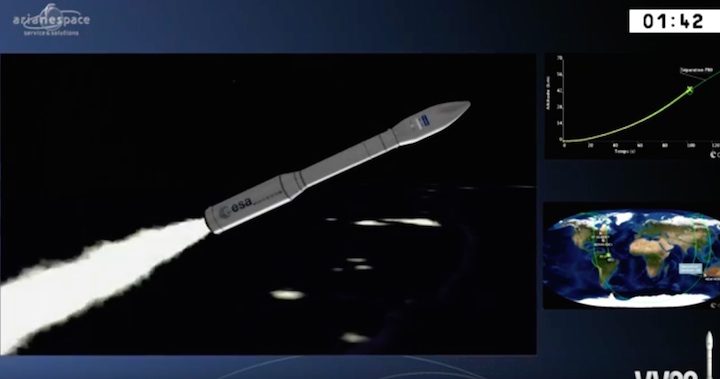
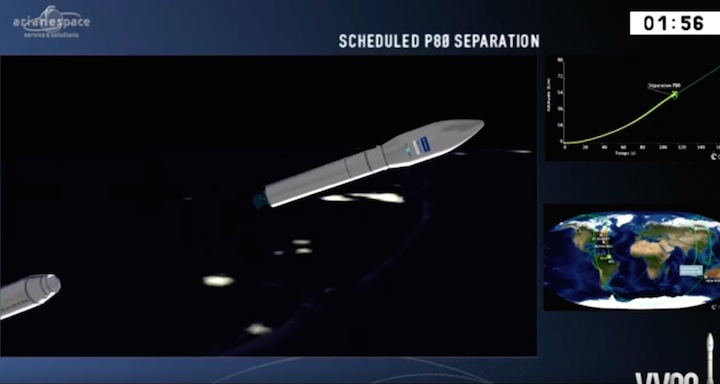
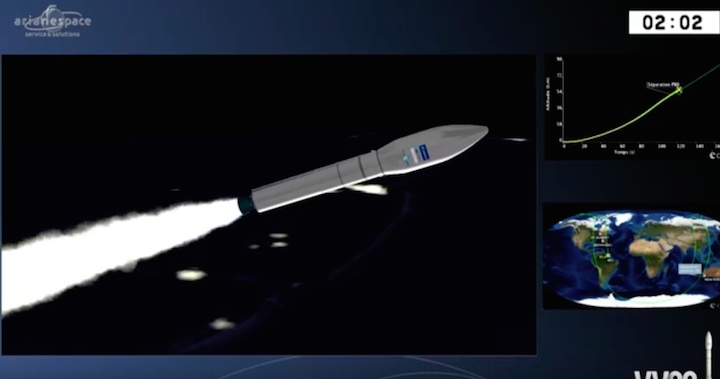
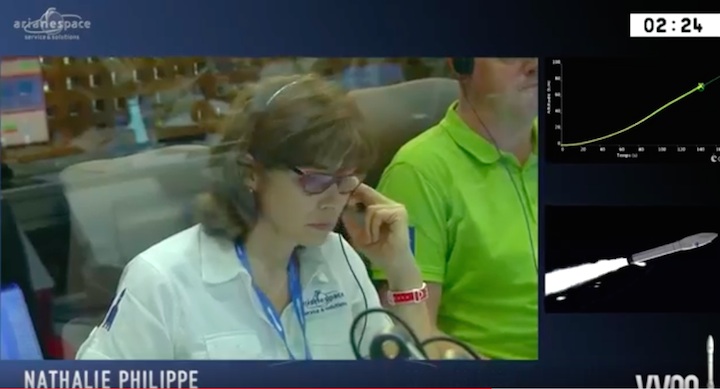
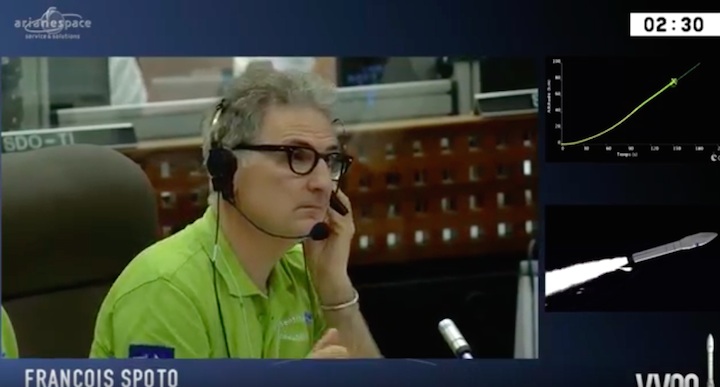
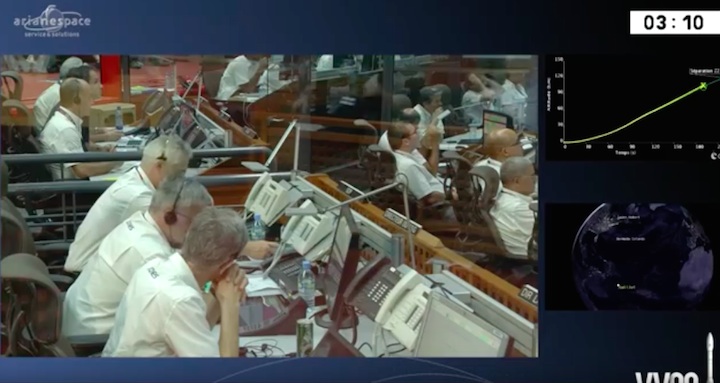
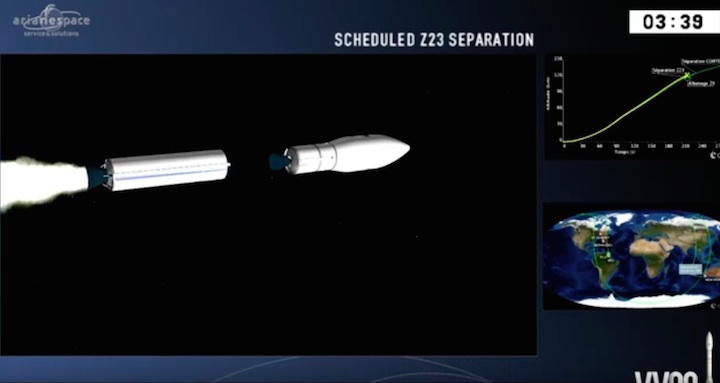
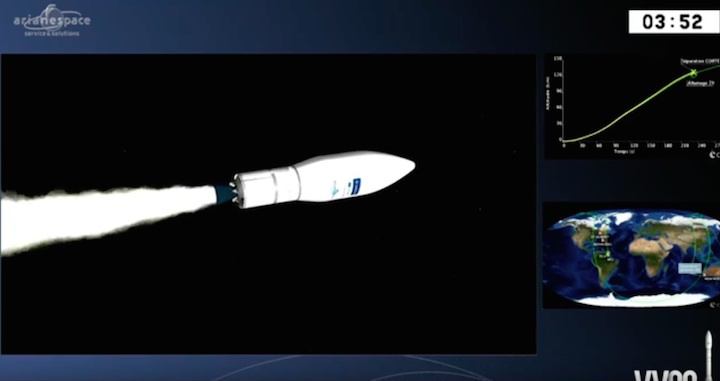
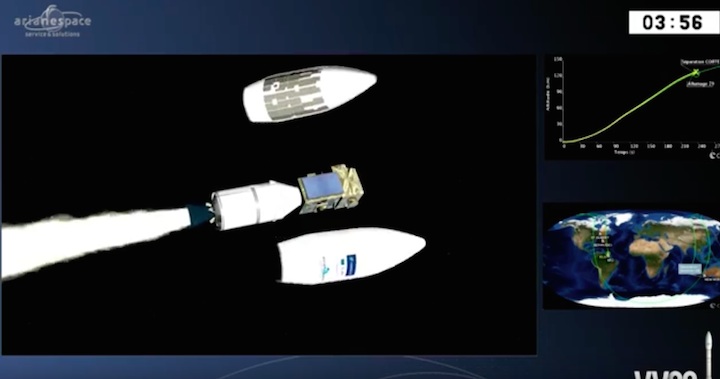
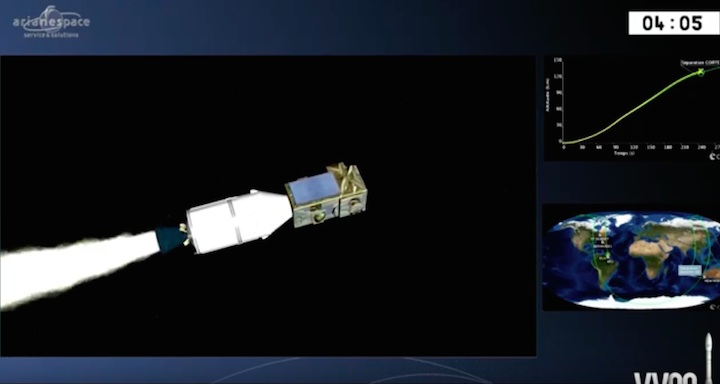
Quelle: arianespace

